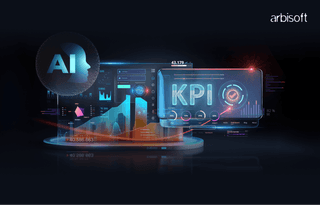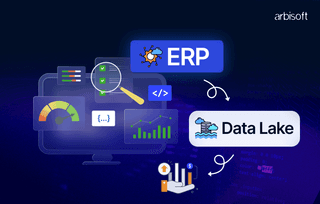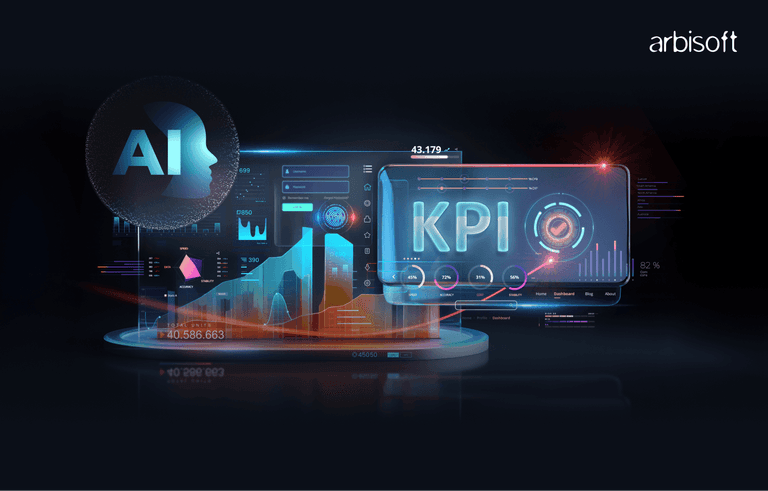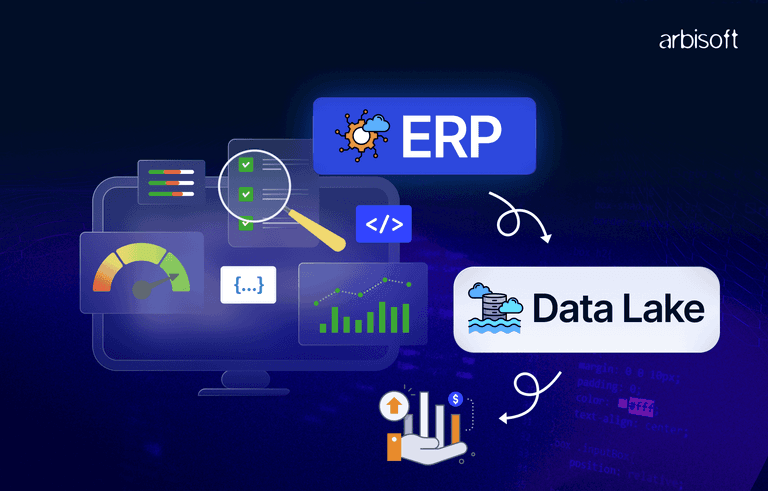We put excellence, value and quality above all - and it shows




A Technology Partnership That Goes Beyond Code

“Arbisoft has been my most trusted technology partner for now over 15 years. Arbisoft has very unique methods of recruiting and training, and the results demonstrate that. They have great teams, great positive attitudes and great communication.”
Shift-Left Testing: A Paradigm Shift in QA

Quality assurance (QA) is an important aspect of software development. It plays a critical role in ensuring the software products are defect-free, working fine, and meeting user expectations. Software testing practices have been updated in parallel with software development methodologies. Shift-left testing is among the various transformative approaches to quality assurance, and it’s a true game changer.
In this blog, I'll dig deep into Shift-Left testing, i.e., what it is, how we can implement it, why it’s important, and the benefits it provides in developing software in the software development lifecycle (SDLC).
What is Shift-Left Testing?
In Shift-Left, testing processes are involved in the earlier stages of the software development lifecycle instead of doing testing at the end of development. This is a proactive approach that aims to catch defects/issues sooner and address them, which eventually improves the quality and efficiency of the software development process.
In traditional sequential models e.g., waterfall, testing activities are performed at the end of the development process. And it’s considered as a separate phase when the code has been completely written. In the waterfall approach, the bugs are frequently discovered late which causes delays and lowers client satisfaction with the process. The production hotfixes are very costly because the defects are discovered late in the development cycle and they are very challenging to resolve.
But in the Shift-Left approach, testing is integrated from the very beginning of the software development process. Testing is considered an integral part of every phase of software development and is no longer considered an isolated activity. It begins from the requirements gathering phase and continues through the design and coding phases.
The Momentum Behind Shift-Left Testing
There are several factors that have contributed to the adoption of the Shift-Left paradigm:
1- Faster time-to-market
In the current market, the competition has increased among the companies. They have to deliver high-quality products. Some companies are working under pressure and at a rapid speed to deliver top-notch products to their clients. With the help of Shift-Left testing, we can ensure that defects are identified early, thus reducing the delays caused by 11th-hour fixes or hotfixes in the production environment.
2- Cost of Defects
The cost of fixing bugs in production environments is very high, and its cost increases exponentially as it moves further along the software development process. Finding bugs at earlier stages (i.e., requirement gathering and design phases) is remarkably cheaper than addressing them before the release. This helps the team to fix bugs and push the code in staging environments in pre-releases.
3- Agile and DevOps Practices
Shift-Left testing supports Agile and DevOps methodologies because we know that Agile and DevOps focus on continuous integration (CI) and continuous delivery/development (CD). In Agile and DevOps methodologies, Shift-Left testing enhances automation and collaboration within the team. As an Agile tester, a resource has to participate in all development activities, from the start of the development phase to the end of the development phase. Agile methodology brings development and testing activities together in the earlier stage of software development, which is also called Shift-Left testing.
4- Client and Customer Expectations
In order to meet client expectations and customer satisfaction, we have to develop products that provide flawless user experience. Sometimes, minor bug leakage can damage the reputation of a brand. In this scenario, Shift-Left testing helps identify defects early, which is key to ensuring quality and safeguarding a brand’s reputation.
Core Principles of Shift-Left Testing
For Shift-Lift testing, the organization should consider the following principles:
1- Early Involvement of QA
QA should be involved in all phases of the software development process. QA should collaborate with product owners, product managers, designers, and developers in all software development phases. In agile methodologies, besides executing tests, QA helps the entire team to identify risky areas, clarify user stories, and create functional and non-functional test cases.
2- Introduce Automation Testing
To implement Shift-Left testing, automation testing plays a critical role. Frequently used test cases can be moved to automated regression. If we run them regularly then they can provide us prompt feedback on the quality of our code. Companies mostly automate only their regression suites but in order to achieve the best quality, they need to automate the rest of the suites as well (smoke, sanity, and canary), while leveraging automation testing services.
3- Introduce Test Driven Development
As we know in TDD methodology, the test cases are written before the actual code. In order to get a quality code, these test cases have to pass the predefined tests, bringing quality into the software development process.
4- Bring Static Code Analysis
Static analysis refers to the tools and techniques that can help organizations detect code smells and vulnerabilities before the code is executed. Actually, it’s called code debugging without the execution of the code to make sure that issues are addressed proactively.
5- Continuous Feedback Loops
Shift-Left testing emphasizes client feedback. Organizations should develop manual and automated tests in such a way that they provide insights frequently. We should continuously share those insights with our stakeholders and should take proper actions within time.
Benefits of Shift-Left Testing
Shift-Left testing provides many benefits to an organization. It is transforming the way software is developed and delivered to clients and customers.
a) Enhanced Quality
Shift-Left brings testing in the earlier stages of the software development process. It provides higher-quality software products by guaranteeing that defects are identified early and are fixed rapidly. Early testing helps organizations ensure that the product is meeting the client’s requirements and expectations.
b) Cost Reduction
Shift-Left testing helps organizations identify and fix defects in earlier phases of the software development process. Fixing defects earlier is less costly than resolving them at the end of the deployment. Shift-Left testing is a productive approach that reduces the cost associated with product bugs.
c) Quick Releases
Shift-left testing identifies the bugs before pre-releases which reduces team effort to fix issues identified after release or at the end of a cycle. This effort leads to quick releases.
d) Improved Team Collaboration
In Shift-Left testing, QAs are involved with stakeholders and developers. This promotes a strong collaboration within the team. Everyone in the team has the same goal i.e. delivering a high-quality product.
e) Reduces the Severity of Risks
Shift-Left testing proactively identifies potential risks during the requirement-gathering phase or design phase. It helps teams to address these potential risks early to reduce the probability of project failures and project delays.
How to Implement Shift-Left Testing
A strategic approach is required to adapt Shift-Left testing. Below are the steps for implementing it successfully:
Step 1: Acquire the Right Perspective
Besides technical transformation, Shift-Left testing also provides a major cultural movement within organizations. In order to adopt shift-left, an organization has to break down boundaries between QA and developers. Organizations must encourage team collaboration from the earlier stage of the software development process.
Step 2: Cross-Functional Teams
The entire team should have cross-functional skills. The entire team should be trained e.g., QAs should be trained to understand the development processes, and developers should be trained to know the basics of QA testing.
Step 3: Use Automation Tools
The organizations should invest in automation tools e.g., Selenium, Appium, Cypress, and WDIO. They should buy static code analysis tools such as ESLint. ESlint easily configures with automation tools like WDIO. For continuous integration, Jenkins is a good option.
Step 4: Involve QAs in Requirements Discussions
In order to improve test coverage, organizations must engage QAs in requirements-gathering discussions. During this stage, they can point out potential risks and ambiguities related to the quality of the product.
Step 5: Repeat and Improve
With the help of Shift-Left testing, teams can review the quality of the product with the help of feedback taken from the team. Frequent feedback helps the team to improve the process by making required adjustments.
Challenges in Adopting Shift-Left Testing
The benefits of Shift-Left testing are interesting and helpful for organizations but they may face a few challenges during its implementation:
i) Resistance to Change
Teams using traditional testing processes may hold out against the shift-left approach. In order to conquer this resistance, teams should use strategic approaches. This involves fostering clear and constructive communication and proper training.
ii) Investment in Automation Tools
Purchasing automation tools requires huge costs and some organizations may not afford it. But, if an organization can pay the cost of automation tools, then in the future, these tools prove to be rewarding. Besides automation tools, the cost of training resources sometimes becomes a barrier for organizations. Because either they have a limited budget or limited resources.
iii) Reduced Delivery Speed
Bringing testing activities early sometimes slows down initial development thus creating bottlenecks. To avoid bottlenecks, teams must maintain a balance between quality and speed.
iv) Tools Integration
Choosing and integrating the right tools as per product needs can be complex for some teams. Especially in a case when a team uses various technologies and frameworks.
Real World Success Stories
Netflix
Netflix leverages Shift-Left principles and automated testing. It has a robust engineering culture. They are providing a flawless streaming experience for millions of users.
Amazon
Amazon leverages Shift-Left testing to maintain a quality e-commerce platform. They use Shift-Left testing to catch defects before they impact millions of customers.
Conclusion
Shift-Left testing represents a paradigm shift in how we think about quality assurance. By adopting testing in the earlier stages of the software development lifecycle and integrating software development services, organizations can deliver high-quality software products. They can deliver the products to customers faster and more efficiently. Transitioning to shift-left testing requires initial investments and efforts, but their benefits are long-term and heavier than the challenges.
In today’s fast-moving world, where user expectations are higher than ever, Shift-Left testing is essential and should not be limited to just a good idea. By integrating these qa testing services into their strategy, organizations that adopt this productive approach will see their QA process transform into a proactive force that drives quality, excellence, and innovation.
























